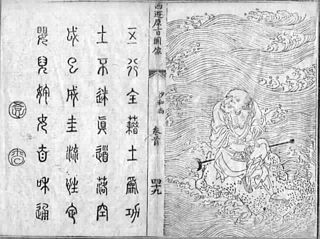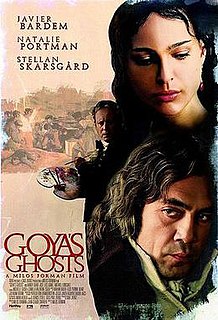
The Inquisition, in historical ecclesiastical terminology also referred to as the "Holy Inquisition", was a group of institutions within the Catholic Church whose aim was to combat heresy. Studies of the records have found that the overwhelming majority of sentences consisted of penances, except in cases of repeat unrepentant heretics who were handed over to the secular courts, which generally resulted in execution or a life sentence. The Inquisition started in 12th-century France to combat religious dissent, particularly among the Cathars and the Waldensians. The inquisitorial courts from this time until the mid-15th century are together known as the Medieval Inquisition. Other groups investigated during the Medieval Inquisition, which primarily took place in France and Italy, including the Spiritual Franciscans, the Hussites, and the Beguines. Beginning in the 1250s, inquisitors were generally chosen from members of the Dominican Order, replacing the earlier practice of using local clergy as judges.

The Malleus Maleficarum, usually translated as the Hammer of Witches, is the best known treatise on witchcraft. It was written by the Catholic clergyman Heinrich Kramer and first published in the German city of Speyer in 1486. It endorses extermination of witches and for this purpose develops a detailed legal and theological theory. It has been described as the compendium of literature in demonology of the 15th century. The top theologians of the Inquisition at the Faculty of Cologne condemned the book as recommending unethical and illegal procedures, as well as being inconsistent with Catholic doctrines of demonology.
The Roman Inquisition, formally the Supreme Sacred Congregation of the Roman and Universal Inquisition, was a system of tribunals developed by the Holy See of the Roman Catholic Church, during the second half of the 16th century, responsible for prosecuting individuals accused of a wide array of crimes relating to religious doctrine or alternative religious doctrine or alternative religious beliefs. In the period after the Medieval Inquisition, it was one of three different manifestations of the wider Catholic Inquisition along with the Spanish Inquisition and Portuguese Inquisition.

A witch-hunt, or a witch purge, is a search for people who have been labeled witches or a search for evidence of witchcraft. The classical period of witch-hunts in Early Modern Europe and Colonial America took place in the Early Modern period or about 1450 to 1750, spanning the upheavals of the Reformation and the Thirty Years' War, resulting in an estimated 35,000 to 100,000 executions. The last executions of people convicted as witches in Europe took place in the 18th century. In other regions, like Africa and Asia, contemporary witch-hunts have been reported from sub-Saharan Africa and Papua New Guinea, and official legislation against witchcraft is still found in Saudi Arabia and Cameroon today.

Heinrich Kramer, also known under the Latinized name Henricus Institor, was a German churchman and inquisitor. With his widely distributed book Malleus Maleficarum (1487), which describes witchcraft and endorses detailed processes for the extermination of witches, he was instrumental in establishing the period of witch trials in the early modern period.

Tomás de Torquemada, also anglicised as Thomas of Torquemada, was a Castilian Dominican friar and first Grand Inquisitor in Spain's movement to homogenise religious practices with those of the Catholic Church in the late 15th century, otherwise known as the Spanish Inquisition.

Sha Wujing is one of the three disciples of the Buddhist pilgrim Tang Sanzang in the 16th century novel Journey to the West written by Wu Cheng'en in the Ming dynasty, although versions of his character predate the Ming novel. In the source novel, his background is the least developed of the pilgrims, and he contributes the least to their efforts.
The benandanti were members of an agrarian visionary tradition in the Friuli district of Northeastern Italy during the 16th and 17th centuries. The benandanti claimed to travel out of their bodies while asleep to struggle against malevolent witches (malandanti) in order to ensure good crops for the season to come. Between 1575 and 1675, in the midst of the Early Modern witch trials, a number of benandanti were accused of being heretics or witches under the Roman Inquisition.

The Directorium Inquisitorum is Nicholas Eymerich's most prominent and enduring work, written in Latin and consisting of approximately 800 pages, which he had composed as early as 1376. Eymerich had written an earlier treatise on sorcery, perhaps as early as 1359, which he extensively reworked into the Directorium Inqusitorum. In compiling the book, Eymerich used many of the magic texts he had previously confiscated from accused sorcerers. It can also be considered as an assessment of a century and half of official Inquisition in the "albigensian" country.

Goya's Ghosts is a 2006 biographical drama film, directed by Miloš Forman, and written by him and Jean-Claude Carrière. The film stars Javier Bardem, Natalie Portman and Stellan Skarsgård, and was filmed on location in Spain during late 2005. The film was written, produced, and performed in English although it is a Spanish production.
The Aix-en-Provence possessions were a series of alleged cases of demonic possession occurring among the Ursuline nuns of Aix-en-Provence in 1611. Father Louis Gaufridi was accused and convicted of causing the possession by a pact with the devil, and he was executed by strangulation and his body burned. This case provided the legal precedent for the conviction and execution of Urbain Grandier at Loudun more than 20 years later.

The Basque witch trials of the 17th century represents the last serious attempt at rooting out witchcraft from Navarre by the Spanish Inquisition, after a series of episodes erupting during all the 16th century following the end of main military operations in the conquest of Iberian Navarre, until 1524. The trial of the Basque witches began in January 1609 at Logroño, near Navarre, bordering on Basque territory.
Angéle de la Barthe was allegedly a woman from Toulouse, France, who was tried for witchcraft and condemned to death by the Inquisition in 1275. She has been popularly portrayed as the first person to be put to death for heretical sorcery during the witch persecutions. Recent scholars have proven that her story, and trial, were fabricated by a 15th-century writer.
Prosecutions for the crime of witchcraft reached a highpoint from 1580 to 1630 during the Counter-Reformation and the European wars of religion, when an estimated 50,000 people were burned at the stake, of which roughly 80% were women, and most often over the age of 40.
In the historical folklore of Sicily, Doñas de fuera were supernatural female beings comparable to the fairies of English folklore. In the 16th to mid-17th centuries, the donas de fuera also played a role in the witch trials in Sicily.
Alonso de Salazar Frías has been given the epithet "The Witches’ Advocate" by historians, for his role in establishing the conviction, within the Spanish Inquisition, that accusations against supposed witches were more often rooted in dreams and fantasy than in reality, and the inquisitorial policy that witch accusations and confessions should only be given credence where there was firm, independent, corroborating evidence. He was probably the most influential figure in ensuring that those accused of witchcraft were generally not put to death in seventeenth- and eighteenth-century Spain. The Spanish Inquisition was one of the first institutions in Europe to rule against the death penalty for supposed witches. Its Instructions of 1614, which embodied Salazar's ideas, were influential throughout Catholic Europe.

Dragon Age: Inquisition, the third main video game in BioWare's Dragon Age series, is the most successful video game launch in BioWare history based on units sold. The game features a large number of characters who are members or potential allies of the organization known as the Inquisition; its formation was sanctioned by Divine Justinia V of the Andrastrian Chantry, the dominant religious organization in the Dragon Age series, prior to the events of Inquisition. The organization's primary purpose is to restore order to the continent of Thedas, the setting of Inquisition, where civil unrest and civil wars have plunged entire nations and societies across the known world into chaos. A supernatural calamity in the beginning of Inquisition led to the deaths of the Divine and the majority of the Chantry leadership, and the subsequent opening of a mysterious metaphysical tear in the sky called the "Breach", which is unleashing dangerous demons upon the world of Thedas.

The Monkey King 2 is a 2016 Hong Kong-Chinese action fantasy film based on the classic 16th century novel Journey to the West by Wu Cheng'en. The film was shot in 3D and is a sequel to the 2014 box office hit The Monkey King with Cheang Pou-soi returning as director and Sammo Hung as action director, who replaces Donnie Yen's role from the previous installment. The film stars Aaron Kwok, who portrayed the main antagonist in the previous installment, as the film's titular protagonist, who also replaces Yen from the previous installment. It was released in the United States on 5 February, in Hong Kong on 6 February and in China on 8 February 2016.
Helena Scheuberin was an Austrian woman who stood trial accused of witchcraft in 1485. Her trial and acquittal led to the Malleus Maleficarum, which was published two years later.
Joseph Hansen was an influential German historian of the witchcraft persecutions, and an archivist in the city of Cologne, where at the age of 80 he was killed, along with his wife, by the bombs of World War II.











